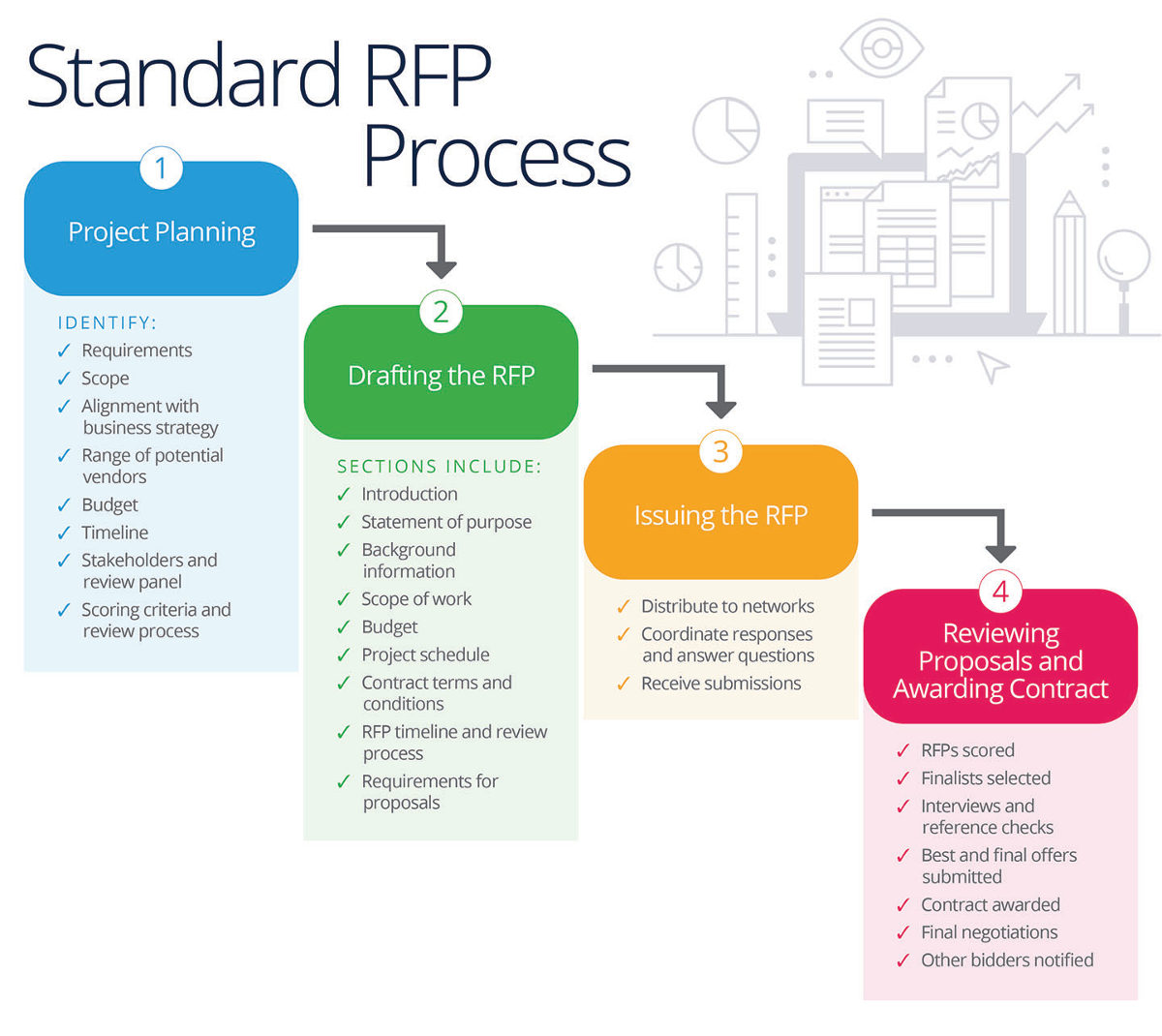Scoping Workshop - Plan and Tips for Scope Session in Software Projects
Scoping workshop provides an excellent opportunity to clarify the needs of the project, disclose areas that haven't been considered earlier...

If you want to build software with an external company and think a request for a proposal is a thing of the past (and a pain in the… neck) – you should read this post. And if you think RFP is something like BTW or TMI – you should read this post.
See why you should create an RFP when you’re looking for a software development team – and how to do it so that it’s useful for everyone involved.
A request for proposal is a document you’ll usually write when you’re looking for a vendor or a service development company. When you have a software tool or platform to build and are looking for a software house, the RFP will help you select the one you’ll eventually work with. The document outlines your project’s details (and we’ll get to the actual details in a minute) – including the technical requirements and time and budget constraints.
Based on an RFP, you’ll get proposals and quotes from the companies you send your RFP to. You will also be informed whether Time & Material or Fixed Price billing will work better for you.
This is the main goal of your RFP – to compare bids and action plans from various software development companies based on as many details as possible. Your software development RFP can also help you see the project elements you might not have noticed or considered before.
If you write it right, it’ll definitely help you make the right decision and make sure your project is off to a good start.

Source: https://www.smartsheet.com/request-for-proposal
The answer is that it depends on both the size of your project and your team’s size. It can be the project manager along with any of the experts (or teams) at your company that will later be involved in evaluating the proposals and, eventually, in the project itself. So make sure you don’t forget to include anyone who’ll play a key role. It would be good for the person who prepares the query to know the methodology of AGILE work because this is how software houses work most of the time.
Outline the project and the contents of the documents – so that after reading this, the vendor knows if this is something they want to engage in. Remember, this is not an academic essay, so instead of writing long sentences to reach the character limit, get straight to the point and make it as informative as possible.
Write a little about what you do – and how the project fits into the overall landscape. You can include things like:
Describe what the project is supposed to achieve and who the intended users/customers are. Consider it a great opportunity to really nail down the goals and the target audience for yourself (another reason why writing an RFP for software development is useful.)
This is the place for including the stages of the project. What will it involve? What exactly do you need help with? What should the software be comprised of? Decide on additional aspects you’re going to outsource like:
Here go any technical details that are essential to the project. Make sure to describe things like:
You probably have a deadline – here’s where you include it, plus deadlines for all project stages you outlined earlier. Be prepared to negotiate.
This is important because it will help the software development company decide if they can fit the project into their schedule or prepare additional resources to meet the deadline.
Anything you know might cause issues on your end during development? Don’t keep it to yourself if you want your project to succeed (within your intended time and budget.)
Your software development company needs to know if you anticipate anything that might cause additional problems or delays. Maybe it’s the current infrastructure that might need updating on your end in the process? Or planned staff shortages or changes on your team? Including all this in your RFP will help you find the company with the skills and resources to manage these situations.
Include the planned budget (and be prepared to negotiate – you might not have considered every possibility.) Also, be prepared to decide if you want to go for a fixed price – or go with agile development, that might mean the requirements might change during the process (and so might the cost.)
Got any specific selection criteria? Maybe you’re looking for specific expertise or a specific project management approach. Maybe the location/time zone is important? Write them all down here. Make it clear who you’re looking for – this will make the final selection much easier.
Let vendors know who to contact in case of questions and how to deliver the proposal. And don’t forget to include the deadline!

Remember, the more precise you can be, the better offer you can get from a software house.
Here are some tips and best practices that might help you create an effective software development RFP (because we’re not bothering with writing ineffective ones – ain’t nobody got time for that!)
A good software development RFP is not that difficult to write – although many seem to think so. It’s probably only difficult if you don’t know the WHY behind it (and if you treat it as yet another useless document you have to create.) So sit down with everyone on your team who has a say in this – and write down all the WHYs. And let the vendors respond with the HOWs in the proposals.
Then choose the one that will help you achieve your goals within your budget and schedule (or the closest one.) Good luck!
Scoping workshop provides an excellent opportunity to clarify the needs of the project, disclose areas that haven't been considered earlier...
An accurate cost estimate is the key to a successful software development project. This may sound a bit cliché – but we...
If you’re looking to outsource software development, there are essentially two pricing models you’ll come across in most software...